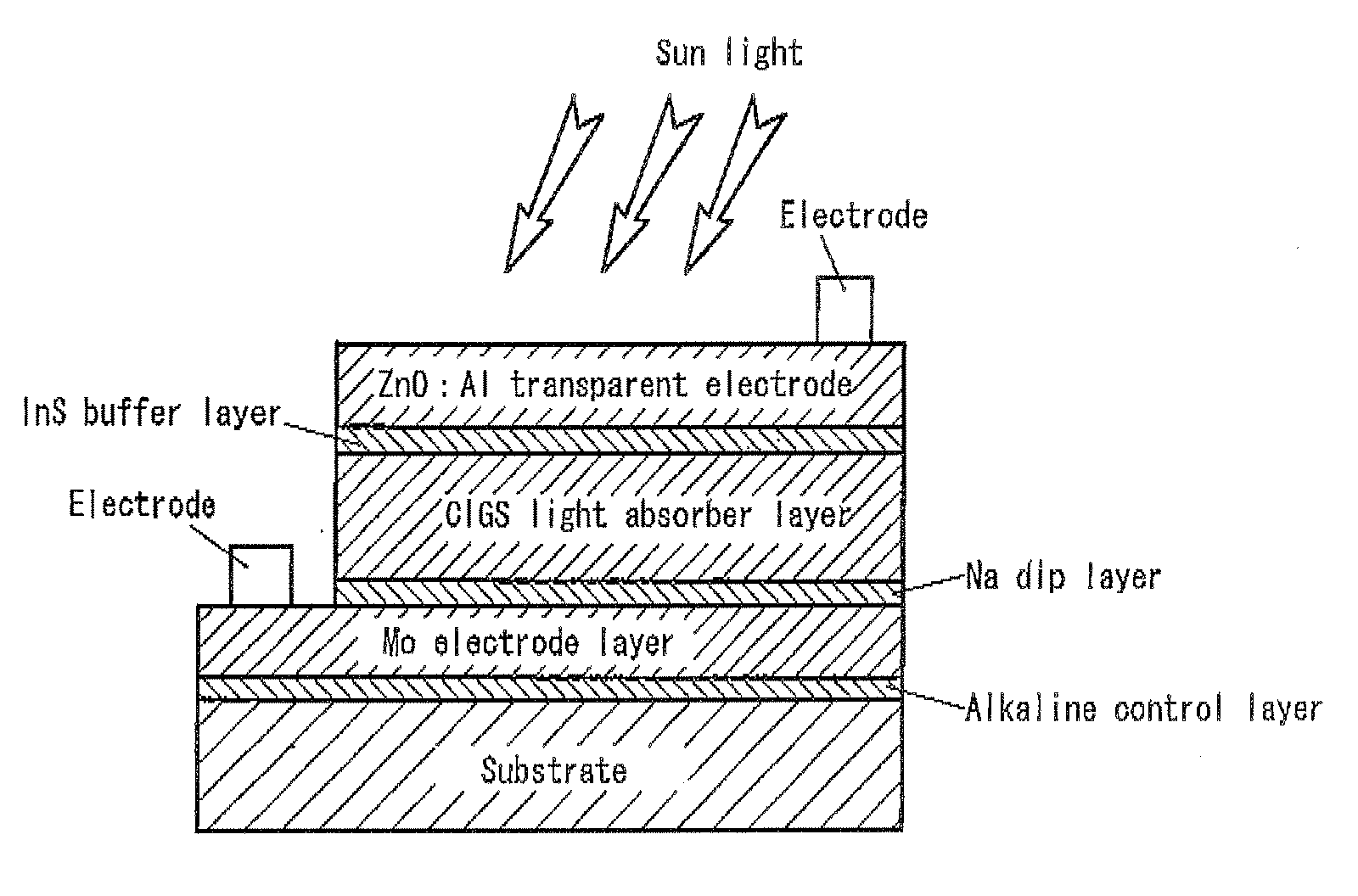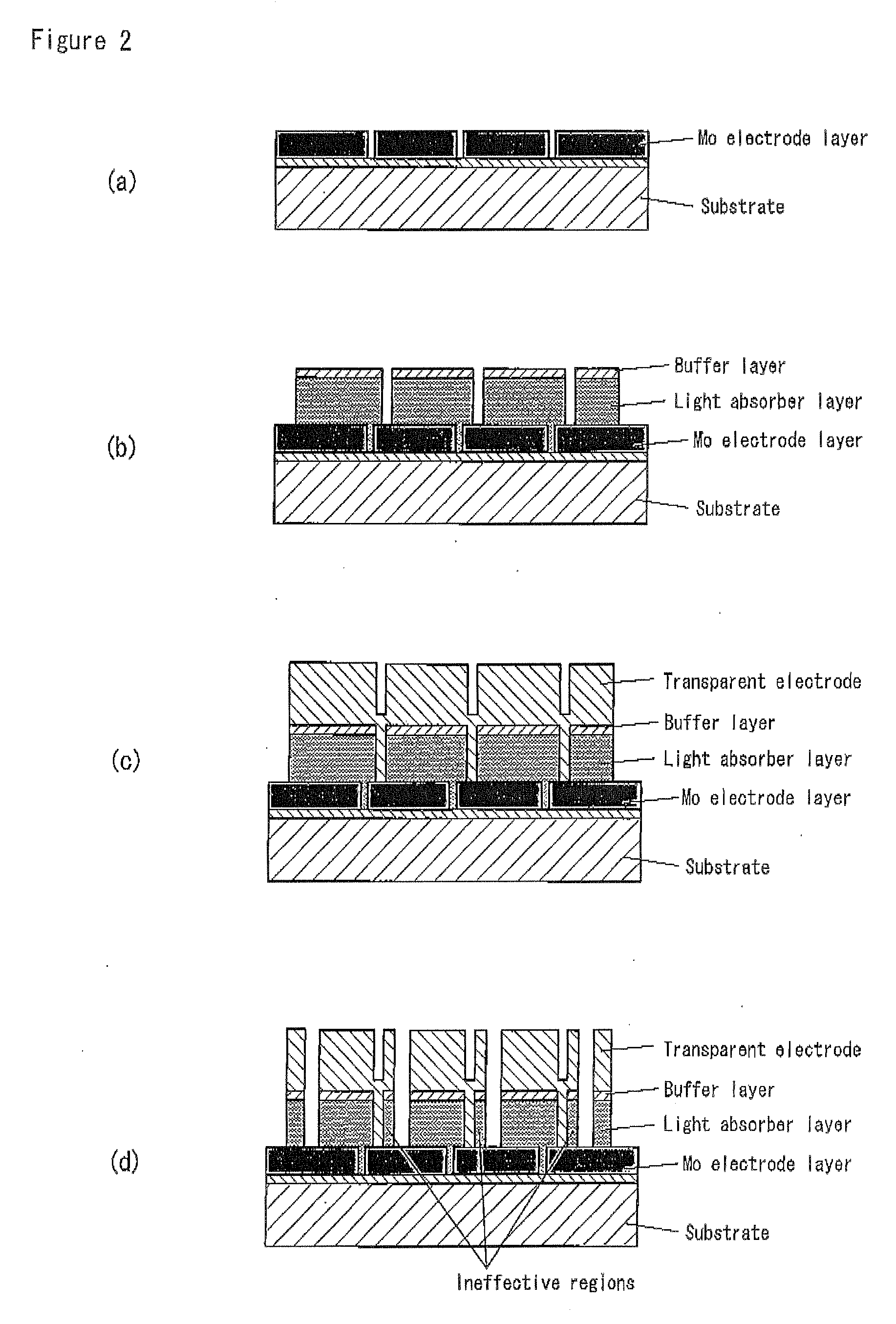Solar Cell
a solar cell and chalcopyrite technology, applied in the field of chalcopyrite solar cells, can solve the problems of inapplicability of mass production such as roll-to-roll process, inconvenient handling of products, and increased manufacturing facility size, so as to prevent any breakage of substrates, reduce the inner electrical resistance of series connections, and high reliability
- Summary
- Abstract
- Description
- Claims
- Application Information
AI Technical Summary
Benefits of technology
Problems solved by technology
Method used
Image
Examples
Embodiment Construction
[0045]A chalcopyrite solar cell according to the present invention is shown in FIG. 5. FIG. 5(a) is a cross sectional view showing main sections of a solar cell (cell), and FIG. 5(b) is a view separately illustrating unit cells which comprise a solar cell (cell).
[0046]In the solar cell, a cell 10 (unit cell) is formed as a unit, comprising: a lower electrode layer 2 (Mo electrode layer) formed on a flexible substrate 1 (substrate); a light absorber layer 3 (CIGS light absorber layer) which contains copper-indium-gallium, and selenide; a highly resistant buffer layer thin film 4 formed of InS, ZnS, CdS, or the like on the light absorber layer 3; and an upper electrode layer 5 (TCO) formed of ZnOAl or the like, and furthermore, a contact electrode section 6 for connecting between the upper electrode layer 5 and the lower electrode layer 2 is formed in order to connect a plurality of unit cells 10 in series.
[0047]The contact electrode section 6 hasp as will be explained later, a Cu / In ...
PUM
| Property | Measurement | Unit |
|---|---|---|
| insulation resistance | aaaaa | aaaaa |
| thickness | aaaaa | aaaaa |
| wavelength | aaaaa | aaaaa |
Abstract
Description
Claims
Application Information
 Login to View More
Login to View More - R&D
- Intellectual Property
- Life Sciences
- Materials
- Tech Scout
- Unparalleled Data Quality
- Higher Quality Content
- 60% Fewer Hallucinations
Browse by: Latest US Patents, China's latest patents, Technical Efficacy Thesaurus, Application Domain, Technology Topic, Popular Technical Reports.
© 2025 PatSnap. All rights reserved.Legal|Privacy policy|Modern Slavery Act Transparency Statement|Sitemap|About US| Contact US: help@patsnap.com



